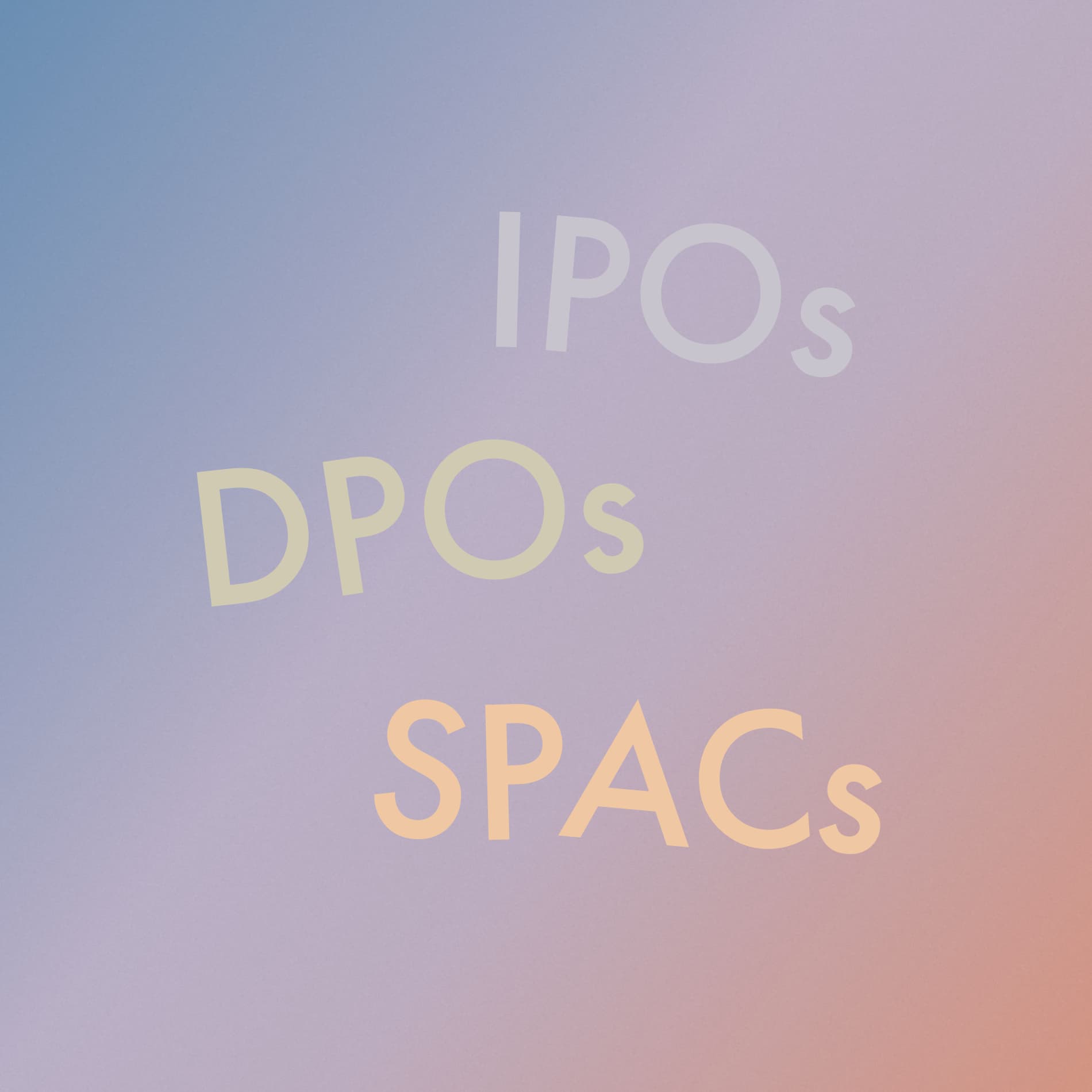
Finance for Humans
OMG You’re Having a Baby! (A Guide to That and Other Big Life Moments That’ll Affect Your Taxes)
The government won’t help you raise your kid, furnish your home, study for exams, or pick the right engagement ring. But they will help you save money on all of those things.
Wealthsimple makes powerful financial tools to help you grow and manage your money. Learn more
Other than stomach bugs and office ice breakers, life comes with plenty of fun moments. And those moments come with… tax implications! Which are not fun. But if you take advantage of the right credits, deductions, and little-known savings opportunities, taxes can save you a lot of money, whether you're buying your first home, moving in together, growing your family, or heading off to university. And having more money is fun.

WHEN YOU BUY YOUR FIRST HOME
Tax difficulty: 🟢 Easy
Potential savings: 💰💰💰
So you’re thinking of buying a home. Congrats! That’s a huge life event and a real grown-up experience — just like having someone you thought was your age call you ma’am or sir for the first time. But before you even look at your first Zestimate, you should be thinking about taxes. Why? Because you’re about to spend a ton of money — and you’ll want every extra penny you can get from the government to help.
TAX MOVES TO MAKE BEFORE YOU BUY
1. Load up your Registered Retirement Savings Plan (RRSP) so you’re ready to use the Home Buyers’ Plan (HBP)
The HBP allows eligible first-time home buyers to withdraw up to $60,000 from their RRSP, completely tax-free, to help with the purchase. You have to pay yourself back or report the missed repayment amount as income, but those payments aren’t required for the first two years after you make the withdrawal, and then you get 15 years to make yourself whole again. Although you can pay off this debt faster than that, because it’s an interest-free loan, it’s often beneficial to take your time.
2. Load up your First Home Savings Account (FHSA) Fresh off its 2023 debut, the FHSA lets first-time home buyers save up to $40,000, tax-free, to put toward a down payment. Your contributions have two huge benefits: they reduce your taxes in the year you make them, plus you aren’t taxed on the money (or any additional gains made from those investments) when you make a withdrawal. Just remember that the money must be used for your first home, otherwise you’ll be taxed. If you don’t end up finding a home, don’t worry: you can always roll the money directly into an RRSP — without affecting your contribution space.
3. Don’t forget your Tax-free Savings Account (TFSA)
If you’ve maxed out those accounts and have any money left to squirrel away, you can also contribute to your TFSA. The cash you put in won’t reduce your taxes, but you won’t be taxed — at all — on any of the money, including gains, when you make a withdrawal. Plus, after you do take money out, you get that contribution room back the following year.
TAX MOVES TO MAKE IN YOUR FIRST YEAR OF HOMEOWNERSHIP
1. Claim the Home Buyers’ Amount on your taxes to save $1,500
The Home Buyers’ Amount is a nonrefundable tax credit that lets you and your spouse or common-law partner jointly reduce the amount of tax you have to pay. It’s a $10,000 credit, but no matter what your marginal tax rate is, the actual reduction is calculated at the lowest rate of 15%. That still translates to a savings of $1,500. A new sofa!
TAX MOVES TO MAKE IN THE MEMORY-FILLED DECADES THAT ARE SURE TO COME
1. Claim the Multigenerational Home Renovation Tax Credit (MHRTC)
Letting your grandparents or parents move in with you gets you free babysitting, plus a 15% refundable tax credit on up to $50,000 worth of renovations, which means a maximum savings of $7,500. To qualify for the MHRTC, renovations do have to be related to building a secondary unit in your home. So a room to hide in when they commandeer the TV for When Calls the Heart doesn’t count.
2. Claim the Home Accessibility Tax Credit (HATC)
If you live with someone 65 or older and they qualify for the Disability Tax Credit, the HATC provides you with a 15% nonrefundable tax credit on up to $20,000 of renovations to improve the accessibility of your home. That’s a savings of up to $3,000.
3. Claim your medical expense credits
If someone in your household needs accommodations for a qualifying medical condition — this can include anything from a sealed-combustion furnace for a respiratory ailment, driveway alterations for a mobility impairment, or widening hallways to fit a wheelchair — the government helps reduce your costs by letting you claim those expenses on your taxes.

WHEN YOU GET MARRIED (OR MOVE IN TOGETHER)
Tax difficulty: 🟢 Easy
Potential savings: 💰💰
Getting married is a big moment (moving in together counts, too, unless you ask the pope). Suddenly, you have the opportunity to be close to the person you love, 24 hours a day. Even better, you have to pay for only half of the Netflix subscription. Here are a few important questions to help you make the most of your new situation. In terms of your taxes, at least.
What qualifies as cohabitation?
The Canada Revenue Agency’s definition of a relationship involves more than just occasionally texting each other “u up?” It also has nothing to do with how often you unload the dishwasher, but it really should. To get any tax benefits from living together, you need to be married or common-law partners — a relationship in which you are not married, but at least one of the following three criteria are met:
(1) you’ve been living together (conjugally!) for at least 12 continuous months
(2) your partner is the parent of your child or children
(3) your partner has custody of your child or children
This criteria is probably different from your province or territory’s definition of common-law (in Ontario, for example, you aren’t considered common-law until you’ve lived together for three years). But we’re just talking taxes here, not family law.
Note: To get any tax breaks for your cohabitation, you need to let the CRA know it’s happening. The best way to do that is not by sending them a link to your registry, but by logging in to your CRA My Account or calling. Don’t expect a gift.
What tax benefits come with cohabitation?
Once you are official, you can start taking advantage of certain spousal benefits on your tax returns. And although it can have the opposite effect in your relationship, the greater the difference in income between partners, the greater the potential tax benefit.
Cohabitating couples can:
claim the pooled charitable donations and pooled medical expenses amounts on whichever partner’s return will provide optimal savings
transfer unused credits for things like age, Canada caregiver, disability, pension, and tuition amounts. If you haven’t used them and your partner can, now you can pass them along. Just note that the annual cap is $2,000 for pension transfers and $5,000 for tuition transfers.
split pension income between both partners to take advantage of different marginal tax rates and reduce overall income taxes
claim the spouse or common-law partner amount — any remaining credit from one partner’s Basic Personal Amount — on the other partner’s return
What happens if your relationship ends?
You’ll have to tell the CRA once you’ve been separated for 90 days — not because they have time to help you process your feelings, but because they need to update your tax withholdings.

WHEN YOU GROW YOUR FAMILY
Tax difficulty: 🟡 Involved, but nothing you can’t handle
Potential savings: 💰💰💰💰
Whether it’s your first or fourth, adding a new member to your family means less sleep, more stress, and discovering just how much more room there is in your heart than you expected. And tax breaks! There aren’t nearly enough for this to be a moneymaking endeavour, but the savings will help when it comes time for braces.
PRE-STORK TAX BREAKS TO TAKE ADVANTAGE OF
Conception, fertility, and birth-related medical expenses The cost of ultrasounds, IVF treatments, fertility-related prescription drugs, pre- and post-natal treatments, and hospital services can really add up. They can also all be claimed as medical expenses. If you’re using a surrogate, the expenses you incur for them can also be claimed, as long as they are eligible medical expenses (the cost of a Crave subscription during bed rest does not count).
Adoption expenses
You can currently claim up to $19,066 in adoption-related expenses. That includes things like agency fees, court costs, required travel, document translation, and fees paid to foreign institutions.
POST-STORK TAX BREAKS TO TAKE ADVANTAGE OF
Registered Education Savings Plan (RESP)
RESPs are tax-advantaged savings accounts that can be used toward postsecondary education. The government will also match 20% of contributions up to $2,500 each year, for a lifetime total match of up to $7,200. As soon as you get your kid's Social Insurance Number — whether that’s in the hospital or when the adoption paperwork is signed — they’re eligible to have an RESP opened in their name.
Canada Learning Bond
Children of eligible low-income families can receive a $500 deposit in their RESPs from the government the first year it’s opened. Plus, every year after that until they turn 15 they’ll get another $100, up to a maximum benefit of $2,000.
Regional grants
If you live in Québec, felicitations: the provincial government will kick in their own match of 10% of your RESP contributions, up to a max of $250. Live in BC? Expect a $1,200 RESP gift when your kid turns 6.
Canada Carbon Rebate
You’ll automatically receive a tax credit depending on your province or territory, whether you live in a rural or urban area and the number of children you have under the age of 19. You’ll receive the CCR as four separate payments in April, July, October, and January.
Canada Child Benefit
Depending on your income, marital status, and the kid’s age, you may qualify for up to $7,437 per child per year in tax-free support until they turn six. After that, you may qualify for a maximum of $6,570 per year, for each of your children, until they turn 18. You can apply for this benefit when registering the birth of a newborn in your province or territory, online through your CRA My Account, or even by mail if your local telegram store is closed.
Eligible dependent tax credit
If you’re not married and not in a common-law relationship, you can claim a nonrefundable tax credit — up to the same amount as your own basic personal amount credit — for your dependant.
Taxes shouldn’t be taxing.
From our sponsor
Taxes shouldn’t be taxing.
Wealthsimple can handle simple tax returns or complex ones — even as complex as yours. And it only costs whatever you’re willing to pay.

GST/HST credit
If you’re already receiving the GST/HST credit, a quarterly payment to certain families to help offset the costs of GST and HST, you’ll get an extra $179 for each child under the age of 19.
TAX BREAKS THAT COME A LITTLE LATER
Fitness and Arts credit: If you live in Manitoba, Newfoundland and Labrador, Nova Scotia, Québec, or Yukon, you can claim a portion of your child’s fitness and arts expenses on your taxes. Each province and territory has slightly different rules and names for the credit. In NL, for example, the activity has to be “strenuous” to qualify. But somehow golf counts. And bowling.
Child Care Expense deduction
If you’re paying for nursery school, a day care centre, or day camp, you can claim an annual deduction of up to $8,000 of child care expenses per eligible child under age 7 and up to $5,000 per eligible child aged 7-16. You can claim up to $11,000 of child care expenses annually for any child who may qualify for the disability tax credit.
Medical expenses tax credit
The same list of medical expenses that you can claim for yourself can be claimed for your child until they turn 18. How much you get depends on the total expenses and income amounts.

WHEN YOU GO TO UNIVERSITY
Tax difficulty: 🟢 Easy
Potential savings: 💰💰💰💰
Even if you’re not getting a math degree, you know that university costs can add up. The government wants to help! Not by sending you pre-made flashcards for organic chemistry, but by offering tax breaks that’ll keep a little more of your your money in your pocket — and maybe keep you from moving back in with mom and dad.
GOVERNMENT PROGRAMS TO TAKE ADVANTAGE OF
Registered Education Savings Plan (RESP)
If your family set you up with an RESP, it’s time to cash in. You’ll be taxed on the withdrawal, but, well, you’re a student. People who live on ramen get taxed like… people who live on ramen. So don’t expect to lose much there.
Lifelong Learning Plan (LLP)
The LLP tends to be more helpful to folks who are getting degrees later in life (because they are more likely to have contributed to RRSPs). But if you planned ahead — maybe you were a TLDR reader early on — you can take advantage of it. The LLP lets you borrow up to $10,000 a year ($20,000 total) from your RRSP to finance full-time training or education for yourself, your spouse, or your common-law partner.
DEDUCTIONS TO TAKE ADVANTAGE OF
Tuition credit
As a Canadian postsecondary student, you can deduct tuition from your income tax. Even if you don’t make much money, be sure to claim your tuition fees anyway. You can transfer up to $5,000 of this year’s credit to a spouse, parent, or grandparent who can use it. Or don’t: you can also carry your credits forward and apply them when you actually do make enough money to live off of. When it’s tax time, your school will give you a T2202 form with all the info you need (or a TL11A if you broke your parents’ hearts and went to university outside of Canada).
Moving expense credit
If you’re a full-time student who has research grants, those count as income. But if you had to move at least 40 kilometres to go to school, you can reduce that income by claiming moving expenses — everything from transportation and storage costs to the cost of selling a home or breaking a lease.
Student loan interest credit
Interest payments on eligible loans made under the Canada Student Loans Act (or similar federal and provincial programs) are tax-deductible.
Canada Training Credit
For every year you’re between the ages of 26 and 66 and you have eligible tuition fees, you can accumulate a $250 credit (up to a lifetime max of $5,000).
Wealthsimple's education team is made up of writers and financial experts dedicated to making the world of finance easy to understand and not-at-all boring to read.




